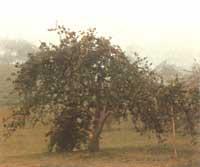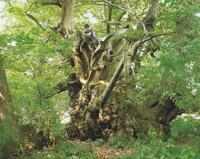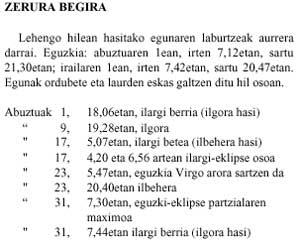Fire cap, chopped apple
1998/01/01 Errekondo Salsamendi, Jakoba Iturria: Elhuyar aldizkaria
The limit of the Pyrenees has gone through its weakest side, as it can be said that it is spread by bacteria and the north of Gipuzkoa and Navarra.
Pathogen
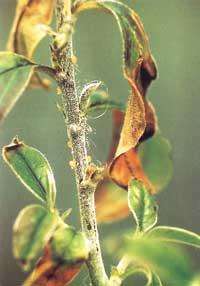
Red fire is produced by a bacterium, Erwinia amylovora. Like all bacteria it is monocellular. Small cane cells have around them a lot of flagella that allow them to move swimming in the water. Because of a polysaccharide produced by bacteria outside the cell, they are accumulated as if they were in oils or sludge. Unlike other species of the genus Erwinia, E. amylovora does not produce pectolytic enzymes.
The bacteria can grow and live on plants epiphytically (in leaves, pujes, flower pipes, etc.) and colonizes the intercellular spaces of healthy parenchymens without causing any apparent damage.
Attacked plants
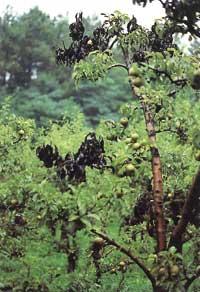
Red fire attacks numerous species and varieties of the rosacea family. The main known damages have historically occurred in the summer area – genus Pyrus. The apple tree – genus Malus – also hits very well and recently the damage to this species has become more important, at least economically. Among the nugget fruit trees that take the host of the bacteria are also the quince – Cydonia – and the medlar – Mespilus –. All the genre of Sorbus (otsolizarra, hostazuria, maspila, etc.) among those used as decorative elements in the gardens and in the wild. ), white thorns ( Crataegus) and genera Cotoneaster and Piracantha are the most affected. In Euskal Herria these plants are of great importance, as they can be a reserve and refuge of the disease in the surroundings of the apple trees that can suffer the greatest damage.
Fruit trees with bone of the Rosáceo family (plum, peach, apricot, cherry, etc.) does not harm them.
Symptoms
The first signs of attack on red fire appear in spring. Once the flowering is over, the same inflorescence and its leaves are then picked up and crushed with a brownish-black color. With the arrival of new shoots in spring, the plant takes the form of what has passed the fire. Hence the name red fire.
It extends from the pujet down, rapidly contaminating the coffers, trunk and roots. The infection causes the parts of the plant to be marked.
The inflorescence, leaves and pujs, once asleep, do not fall, are attached to the plant. This is one of the most significant signs that fire is evil.
In the arba and trunk the bark is made bleached and empty and the wood acquires a blinded reddish color.
The infected fruit has similar moments of rinsing, then black. They do not fall and spend the winter like wrinkled mummies.
In the parts of the plant attacked by the bacteria, tongs are released in the form of resin or adhesive lica. They are yellowish in color and spread bacteria and disease.
A few months after the disease, between eight and fifteen in most cases, the plant dies.
Disease biology
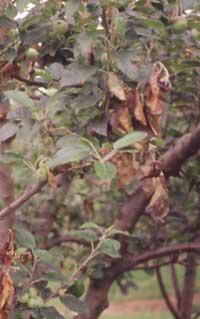
The bacteria causing the disease reverses the trunk and the wounds, scrolls and holes of the sheep. In spring, rain and insects will spread the disease through a sweatshirt full of bacteria that contain these wounds. In the healthy plant the bacteria enter, in most cases, by the stigma of the flower's pistil. Sometimes stoma, lenticello, or wound. Bees that visit sick and healthy plants are the main diffusers of the disease.
The infection of red fire (pollution) requires a temperature between 18º and 30º and a humidity in the air above 50%. Between 21º and 30º, the most dangerous days for pollution are the clear days on which work is being done.
If the temperature or humidity are scarce during flowering, pollution occurs in the second flowering of some varieties during the months of June and July. Varieties with ease to give two blooms (pears William’s and Laxton, etc.) are therefore the most sensitive of fire.
Spread of the disease
The disease spreads through existing plants. When the weather is humid and temperate, in the attacked parts detach viscous tongs filled with bacteria.
Dissemination routes:
- Plants from contaminated sites
- Birds
- Rain
- Wind
- Insects
- Irrigation systems
- Pruning tools, etc.
The speed of reproduction and propagation of the disease will depend on species, varieties, surveillance techniques and weather.
Damage caused
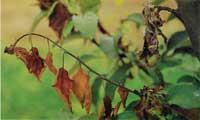
In Euskal Herria the most significant losses can be produced in apple trees, since both cider apple and table apple have considerable economic importance. The attacked plants, in a high percentage, can die in a few months. Those who do not die will also have very limited fertility from the beginning of the attack, as flowering and new bids are practically frustrated.
It can also cause significant damage to the gardens. In the wild, however, it is almost immediate, but the risk of maintaining it and extending it to others is the most terrible.
Fighting the disease
In case it seems that the symptoms of red fire, the first task is to inform the agricultural technicians as soon as possible. In Euskal Herria the disease has just entered and the sooner it controls and combats the better.
No bactericides are known to kill the bacteria responsible for the fire. Therefore, all we can do is control it and reduce it to the minimum possible.
Apple plantation
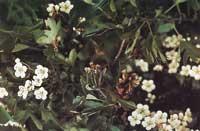
Each variety has a different degree of disease resistance. If you don't want to get against the disease in a lost fight, choose the most resistant varieties. It is also necessary to take into account the resistant capacity and the ability to give rear altsums.
Location of the manzanal
As we have said, local time has a great importance in spreading the disease. In one place, more or less, you can easily destroy elsewhere a variety capable of fighting the disease. Clays and marls, with poor drainage and very acidic soils that make the apple more painful fire.
The way to cultivate the land and fertilizer is also of great importance. Soil calcination to lower the pH to about 6 and a balanced fertilization plan, to avoid excess nitrogen, first of all, will help the apple to fight the disease.
Pruning and pruning
A responsible pruning is essential. We must forget the excess pruning that causes the shoot down of bids and altsuma too strong. It is also recommended to remove arbatxos with fruit eyes too close to the trunk or to the large ponds, which would be the most aggressive for the bacteria.
Sanitation
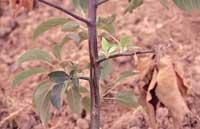
From the moment the flower spreads until the growth of the first pujs slows down, the apple tree must be inspected frequently. Cut and burn all parts of the tree that have fire symptoms as soon as they are detected. Do not collect to light fire or for any other purpose, or deposit it on the ground under any circumstances.
All cuts must be made below twenty centimeters of any wound or chancre. The tools used in pruning or any type of work, when moving from one tree to another and in each cutting section to cut, will be disinfected in grinding, bleach or alcohol.
Also control the plants of the family of rosaceae found in the gardens and forests of the area of Sagastia and detect signs of disease, shoot down and burn the entire plant without cupié.
Treatments
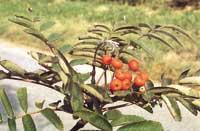
There are two times of bactericidal treatment. The first, at the end of winter, before the bacteria that spend the winter on wounds and chancres live, in order to limit the number of polluting licas they produce. The second, in the pure state of the flower, to protect it from infection with reddish white, is rubbed with a bactericidal antibiotic (terramycin, streptomycin…). Treatments should take into account the development of flowering, temperature and humidity.
In addition to these two seasons, we must be all year round on the apple tree, if we do not want to be hit with the red fire that circulates in the area and we do the crushing. In case of hail or pedrisco, the apple tree should be treated with antibiotics in less than 24 hours. If you want to reduce the risk of transmission of fire by rigid insects such as lice, more attention should be paid to the normal chrontrol.
Where the research goes
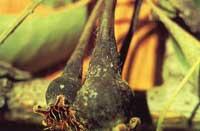
Currently only the red fire can be partially controlled. It can be controlled with resistant genotypes, adapting the way of working the apple tree and applying bactericidal treatments. In the world of phytopathology it has been a great step to start using antibiotics, as it has its advantages and drawbacks.
From there, that is, the path of passing from the control of the bacteria remains long. In the United States and Europe there are numerous groups of researchers involved in this work.
In France, the use of “slow” or non-aggressive forms of bacteria is being investigated. That is to say, the poor mutants of the bacteria would overcome the attacking bacteria and reduce their living areas.
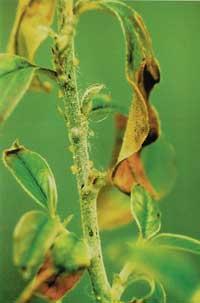
The effect of antibiotics such as streptomycin and oxytetracycline is being studied in the United States. However, they have realized that antibiotic-resistant red fire bacteria form easily. The use of other rival bacteria, such as Erwinia herbicola or Pseudomonas fluorescens, as well as the role of bee disease diffuser are being investigated.
Another research route, also in the United States, focuses on biocontrol. The objective is to strengthen the microorganisms of the cells and tissues of the flower that initially attack the bacteria. The basis of this study are the floral tissues of the prosperous varieties that provide small apples commonly used to increase pollination.
The use of different forms of nitrogen (ammonia, urea, etc.) is also being studied. and the importance of the apple itself that produces it and the growth of the sailing species in which it is present in bacterial aggressiveness.
Decree 74/1997 of the Department of Agriculture and Environment of the Provincial Council of Gipuzkoa
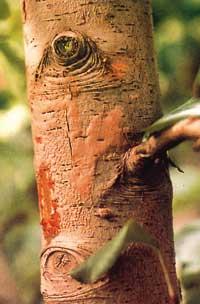
In 1995, specifically in an apple grove in Lezo, red fire was first detected in the Iberian peninsula. This apple tree came out of the ass and burned. In 1996 there are indications that the disease is spreading through Gipuzkoa and all plants with diseases found in apple orchards, gardens, etc. were melted and burned.
This monitoring and opposition work is not enough. The disease can easily infect the apple apples of cider so rooted in Gipuzkoa and spread to the surrounding territories, as it extends through natural means such as birds, insects or rain.
By decree 74/1997 of 11 November 1997, the Provincial Council of Gipuzkoa intends to prevent the disease. The most important points of the Decree are:
- The fight against the bacteria Erwinia amylovora is mandatory.
- Organization of a prospective strategy in sagasti and seminars.
- The Department of Agriculture will emphasize knowing the symptoms of the disease among those who work with plants capable of attacking diseases.
- Anyone who detects signs of illness is obliged to inform the Council.
- When the presence of the disease is ensured, the contaminated plants will be burned.
- In the event that a seminar detects the disease, a quarantine of two years will be installed, no plant transport can be carried out without authorization of the Council.
- The County Council may prohibit the reproduction and use of disease-sensitive varieties, publishing annually a list of these varieties.
- In case of demolition and burning of whole apple trees, the Council may compensate.

Gai honi buruzko eduki gehiago
Elhuyarrek garatutako teknologia



